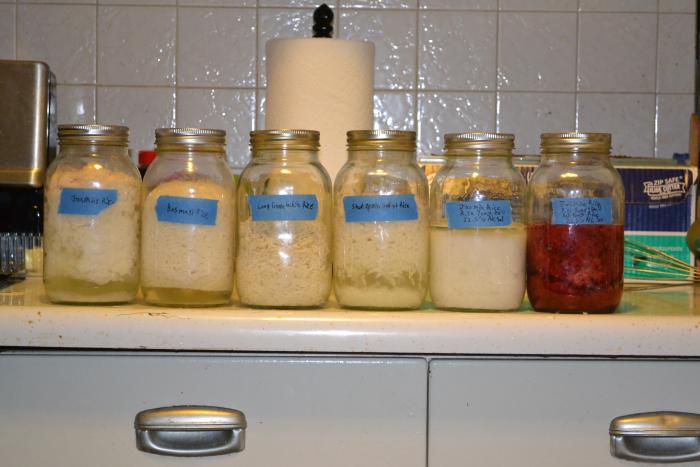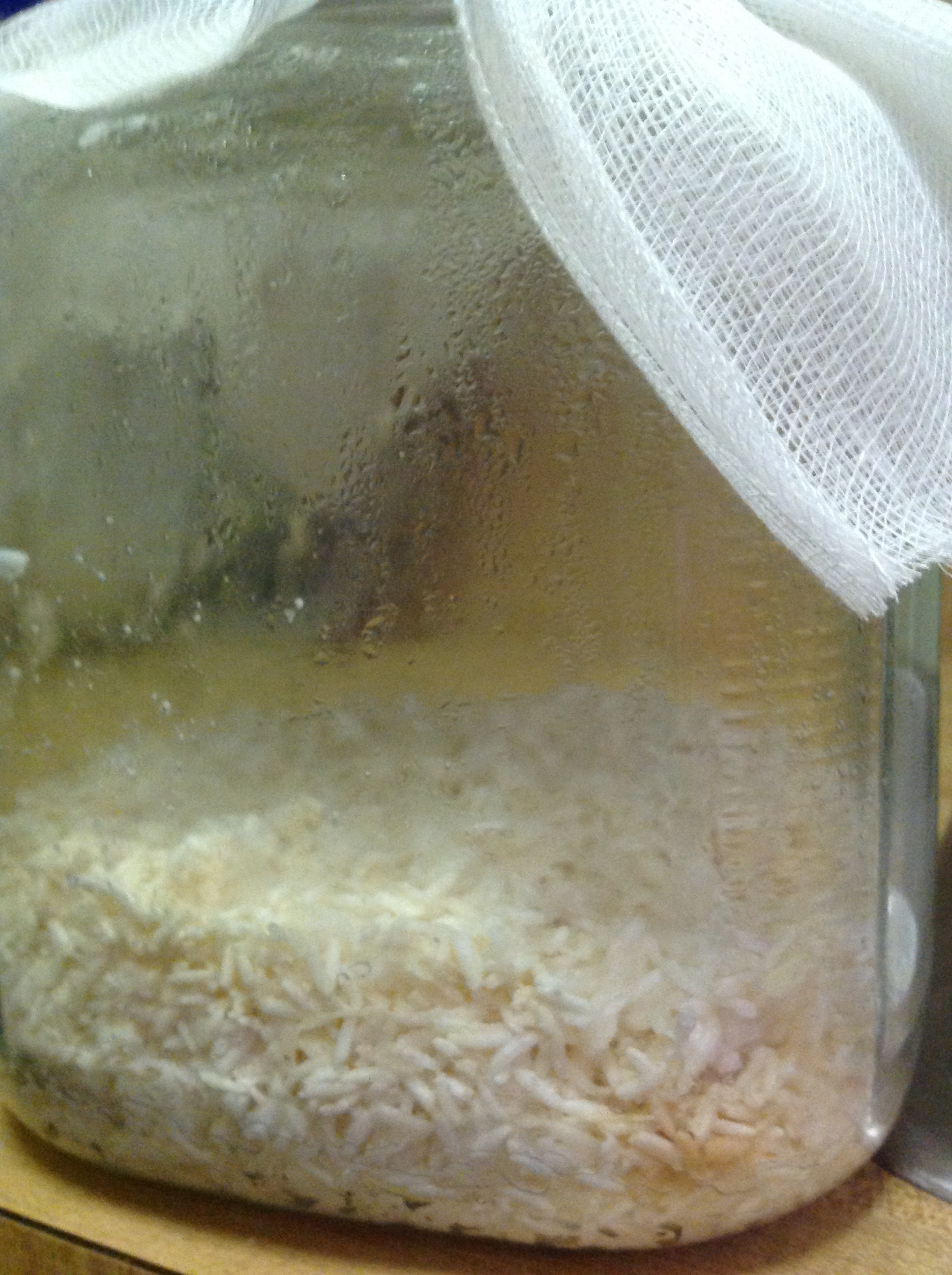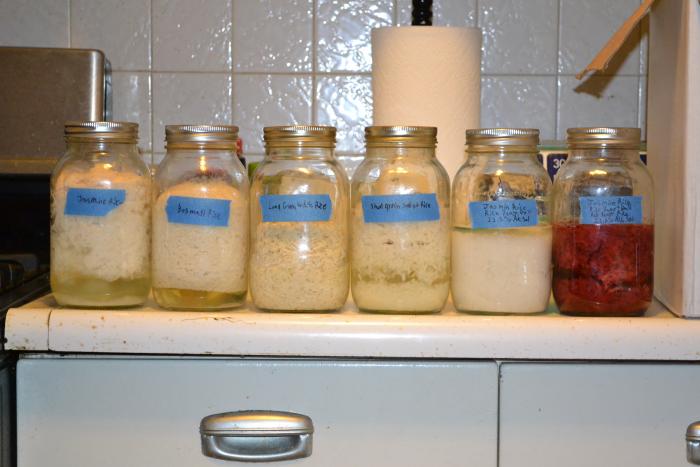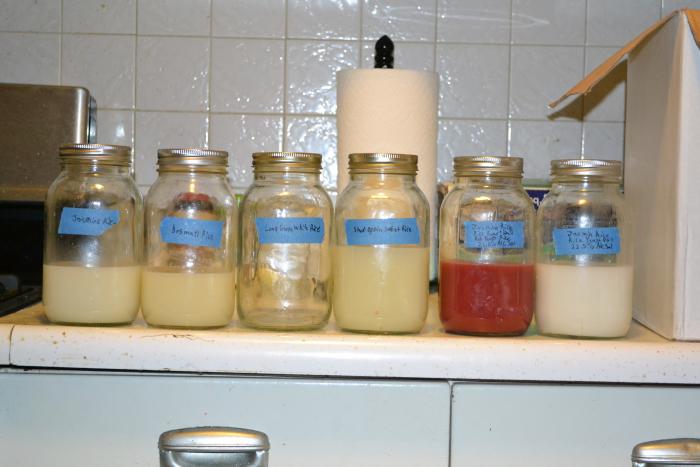Here's the harvest checkup for my latest rice wine experiment. I'm not going to keep posting them in this thread. They are getting lost in the 294 pages of it. I'll start a new thread for my experiments.
As you can see I had the last two batches positions reversed in the first photo. From left to right in photo two.
1. 1.5 cups jasmine rice, 1 gram ARL.
2. 1.5 cups basmati rice, 1 gram ARL.
3. 1.5 cups long grain white rice, 1 gram ARL.
4. 1.5 cups sweet rice, 1 gram ARL.
5. 0.75 cups jasmine rice, 1/2 of a rice yeast ball. Submerged in 22.5% alcohol solution.
6. 0.75 cups jasmine rice, 1/2 of a rice yeast ball, 4.5 tsp crushed RYR. Submerged in 22.5% alcohol solution.
1. Average yield. Fairly neutral rice and alcohol aromas. Medium sweetness, low alcohol feel. Very slight tang to it. It doesn't register as any fruit, just a bit of acid content. Very nice. Slight yellow color.
2. Average yield. Fairly neutral aroma as well, stronger on the rice then on the alcohol. Medium sweetness, low alcohol feel. The acid in the flavor is lower then the jasmine rice batch. Moderate yellow color.
3. No yield. Some sludge was produced, but it wasn't drinkable.
4. Superior yield. Still fairly neutral aroma. Very little rice, much more alcohol aroma. Medium-high sweetness, low alcohol feel. Very little acid in the flavor. Moderate yellow color.
5. Strong rice and alcohol aroma, vaguely fruity too. Mild rice flavor, moderate raisin flavor. Medium-high sweetness, low alcohol feel. No apparent acid. Red in color, obviously.
6. Strong rice and alcohol aroma. Very mild rice flavor. Medium-high sweetness, low alcohol feel. No apparent acid. This is the only sample where it was possible to determine that no yellow tint existed.
The first four batches went pretty much as expected. The alcohol solution experiments did not.
I had expected some starch conversion due to residual amylase in the rice yeast ball. From prior batches, partial conversion of starch has resulted in hard "nuggets" of starch that are left over. This was not the case. The remaining starch was very smooth. If anything, I would say the degree of starch conversion in these experimental batches was higher then expected in a typical rice wine. It was also very apparent from the flavor that significant amounts of sugar are present in the solution. In addition, the acid content of the alcohol solution experiments was nill to my taste buds.
In my opinion there are two things that can be reasonably extrapolated from this experiment. First, that the alcohol content of the wine does not significantly interfere with the saccharification of the starch. Or, the growth of the organism that produces the enzyme responsible for the conversion. Second, the alcohol does interfere with the organism responsible for producing the acid in the wine.
I would not consider either supposition proven, but the data does seem to be strongly leaning in that direction.
Happy Brewing!






















![Craft A Brew - Safale S-04 Dry Yeast - Fermentis - English Ale Dry Yeast - For English and American Ales and Hard Apple Ciders - Ingredients for Home Brewing - Beer Making Supplies - [1 Pack]](https://m.media-amazon.com/images/I/41fVGNh6JfL._SL500_.jpg)










































